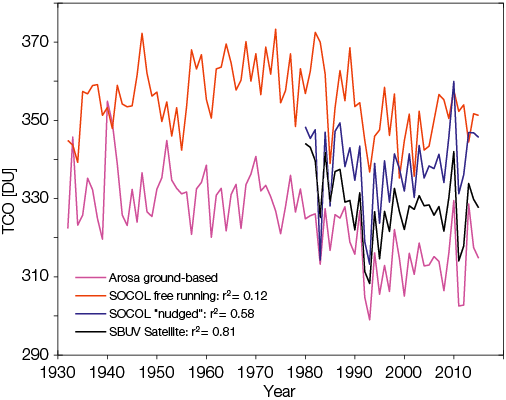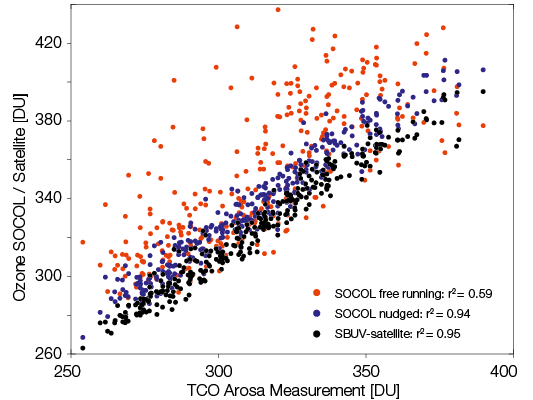Überblick
Das Projekt INFO3RS zielt darauf ab, die zukünftige Entwicklung von “Total Column Ozone” (TCO) in der Schweiz zu untersuchen. Um die Trendanalyse der Entwicklung der Ozonschicht zu unterstützen, werden zusätzliche Datenquellen für bodengestützte Messungen analysiert. Das am PMOD/WRC entwickelte “Chemistry-Climate-Model” (CCM-SOCOL) und die SBUV-Satellitendaten stellen eine unabhängige Datenquelle dar, um die statistische Signifikanz zukünftiger Trends potenziell zu verbessern. INFO3RS wird durch das Program GAW-CH der MeteoSchweiz finanziert.
Overview
The project INFO3RS aims to investigate the future evolution of Total Column Ozone (TCO) in Switzerland. To support the trend analysis of the development of the ozone layer, additional data sources to ground-based measurements are analysed. The global Chemistry-Climate Model, CCM-SOCOL, developed at PMOD/WRC, and the SBUV satellite data represent an independent data source to potentially enhance the statistical significance of future trends. INFO3RS is funded by the MeteoSwiss GAW-CH programme.


